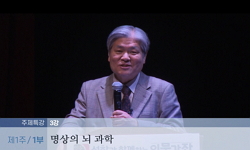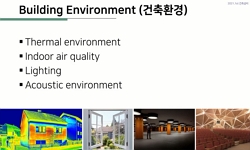Director Feng Xiaogang’s film A World Without Thieves is the first Chinese film that successfully borrows from the Hollywood melodrama model and combines marketability and commercialism with Buddhist elements. Moreover, it is a film with the small p...
http://chineseinput.net/에서 pinyin(병음)방식으로 중국어를 변환할 수 있습니다.
변환된 중국어를 복사하여 사용하시면 됩니다.
- 中文 을 입력하시려면 zhongwen을 입력하시고 space를누르시면됩니다.
- 北京 을 입력하시려면 beijing을 입력하시고 space를 누르시면 됩니다.
https://www.riss.kr/link?id=A108254563
-
저자
유영 (동국대학교)
- 발행기관
- 학술지명
- 권호사항
-
발행연도
2022
-
작성언어
Chinese
-
주제어
Buddhist film ; Buddhist thought ; A World Without Thieves ; theme ; character ; architecture ; 佛教电影 ; 佛教思想 ; 《天下无贼》 ; 主题 ; 人物,建筑 ; 불교영화 ; 불교사상 ; <천하무적> ; 주제 ; 인물 ; 건축
-
등재정보
KCI등재
-
자료형태
학술저널
-
수록면
167-185(19쪽)
-
KCI 피인용횟수
0
- 제공처
-
0
상세조회 -
0
다운로드
부가정보
다국어 초록 (Multilingual Abstract)
Director Feng Xiaogang’s film A World Without Thieves is the first Chinese film that successfully borrows from the Hollywood melodrama model and combines marketability and commercialism with Buddhist elements. Moreover, it is a film with the small potato and ordinary people as the subject of salvation, which is universal. The film falls into the broad perspective of integrating Buddhist thoughts into the contemporary social context as a Buddhist film with realistic themes. The film is filled with various Buddhist symbols such as Buddha statues, Xiang Mo Chu, rituals, and Labrang Monastery. This paper takes the film “A World Without Thieves” as the object of study, and examines the Buddhist thoughts embodied in the film from the theme,characters and architecture.
The theme of the film connotes the good and evil ethics of Buddhism, the idea of meditation, the concept of life and other Buddhist thoughts. The main characters Wang Bo, Wang Li and Sha Gen show the Buddhist thoughts of “tathagata-garbha”, “punitive justice”, “giving” and “animal concept” etc. The background image of the film’s title is a fresco from the south wall of Cave 57 in the Mogao Caves at Dunhuang. The background image features Amitabha Buddha, Arya Avalokiteshvara, Mahasthamaprapta, and two disciples, one old and one young. Among them, Amitabha Buddha is in charge of the Western Paradise, while Arya Avalokiteshvara and Mahasthamaprapta embody the Buddhist idea of the Four Unlimited Hearts. Moreover, as an important filming location of the movie, Labrang Monastery, the “Jacob’s Ladder” scene shown in the movie can reflect the spatial view of Buddhism, and the mandala pattern on the Buddhist temple can reflect the cosmic view of Buddhism. The Buddhist thoughts in the movie can not only enlighten the characters in the movie, but also enlighten the movie viewers, with practical and social significance.
참고문헌 (Reference)
1 不二, "金马影帝冯小刚的佛教思考"
2 丹曲, "藏传佛教文化的宝库 走进拉卜楞寺" (12) : 2016
3 管淑花, "罪恶与救赎——《天下无贼》的宗教性解读" (5) : 2005
4 释圣因, "管窥佛教电影的语言观" (5) : 2019
5 胡维铨, "白话佛学文化小经典:地藏菩萨本愿经白话解释" 团结出版社 2012
6 赖永海, "楞伽经" 中华书局 2010
7 麦彭仁波切, "智者入门论" 西藏藏文古籍出版社 2018
8 陈兵, "新编佛教辞典" 中国世界语出版社 1994
9 "数字敦煌-莫高窟第057窟"
10 宁强, "敦煌石窟寺研究" 甘肃人民美术出版社 2018
1 不二, "金马影帝冯小刚的佛教思考"
2 丹曲, "藏传佛教文化的宝库 走进拉卜楞寺" (12) : 2016
3 管淑花, "罪恶与救赎——《天下无贼》的宗教性解读" (5) : 2005
4 释圣因, "管窥佛教电影的语言观" (5) : 2019
5 胡维铨, "白话佛学文化小经典:地藏菩萨本愿经白话解释" 团结出版社 2012
6 赖永海, "楞伽经" 中华书局 2010
7 麦彭仁波切, "智者入门论" 西藏藏文古籍出版社 2018
8 陈兵, "新编佛教辞典" 中国世界语出版社 1994
9 "数字敦煌-莫高窟第057窟"
10 宁强, "敦煌石窟寺研究" 甘肃人民美术出版社 2018
11 牛乐, "拉卜楞寺与安多藏区藏传佛教艺术的体系化传承" 13 (13): 2016
12 吴迎君, "慈航的影像之道——当代中国佛教电影摭评" (5) : 2017
13 何晗, "华语佛教电影与佛化电影" (3) : 2017
14 中国佛教文化研究所, "俗语佛源" 天津人民出版社 2008
15 丁明夷, "佛教艺术百问" 中国建设出版社 1989
16 赵荷姗, "佛教文化在电影创作中的艺术体现" (20) : 2014
17 扎扎, "佛教文化圣地——拉卜楞寺" 甘肃民族出版社 2010
18 高飞, "佛教文化与中国电影" 中国传媒大学出版社 2013
19 陈红兵, "佛教动物观及其生态环保意义" (6) : 2016
20 丁福保, "佛学大辞典(简体横排版)四" 江苏人民出版社 2017
21 丁福保, "佛学大辞典(简体横排版)二" 江苏人民出版社 2017
22 丁福保, "佛学大辞典(简体横排版)三" 江苏人民出版社 2017
23 丁福保, "佛学大辞典(简体横排版)一" 江苏人民出版社 2017
24 王艳, "传播与表达: 冯小刚电影中的佛教元素与佛教情怀" 21 (21): 2014
25 新京报, "二次开口谈《天下无贼》冯小刚:佛魔一念间(图)"
26 张慧文, "中国佛教电影探微" (14) : 2012
27 魏德东, "《天下无贼》的宗教解读" (3) : 2005
28 冯小刚, "《天下无贼》: 用梦慰藉心灵" (1) : 2005
29 全芳兵, "“亚”佛教电影中女性形象塑造冷思考" (12) : 2016
동일학술지(권/호) 다른 논문
-
- 한국중문학회
- 이성숙
- 2022
- KCI등재
-
희곡에서 담화표지의 번역 고찰:단막극 중 담화표지 ‘什么’의 중한 번역
- 한국중문학회
- 김지은
- 2022
- KCI등재
-
《西漢演義》의 일본 수용 및 출판양상 연구 - 韓中日 상호연관성 규명을 중심으로
- 한국중문학회
- 배우정
- 2022
- KCI등재
-
敦煌 ‘時間類’定格聯章體歌辭 중의 ‘時間’ 함의 - 敦煌〈五更轉〉을 중심으로
- 한국중문학회
- 김금남
- 2022
- KCI등재
분석정보
인용정보 인용지수 설명보기
학술지 이력
| 연월일 | 이력구분 | 이력상세 | 등재구분 |
|---|---|---|---|
| 2026 | 평가예정 | 재인증평가 신청대상 (재인증) | |
| 2020-01-01 | 평가 | 등재학술지 유지 (재인증) |  |
| 2017-01-01 | 평가 | 등재학술지 유지 (계속평가) |  |
| 2013-01-01 | 평가 | 등재학술지 유지 (등재유지) |  |
| 2010-01-01 | 평가 | 등재학술지 유지 (등재유지) |  |
| 2008-01-01 | 평가 | 등재학술지 유지 (등재유지) |  |
| 2006-01-01 | 평가 | 등재학술지 유지 (등재유지) |  |
| 2003-01-01 | 평가 | 등재학술지 선정 (등재후보2차) |  |
| 2000-07-01 | 평가 | 등재후보학술지 선정 (신규평가) |  |
학술지 인용정보
| 기준연도 | WOS-KCI 통합IF(2년) | KCIF(2년) | KCIF(3년) |
|---|---|---|---|
| 2016 | 0.19 | 0.19 | 0.19 |
| KCIF(4년) | KCIF(5년) | 중심성지수(3년) | 즉시성지수 |
| 0.18 | 0.19 | 0.442 | 0 |




 KISS
KISS






